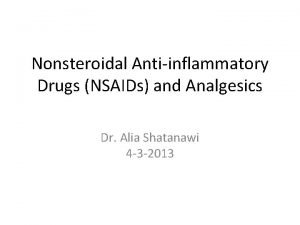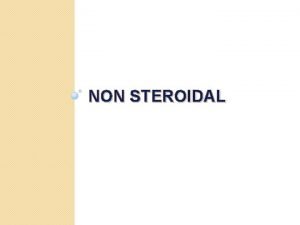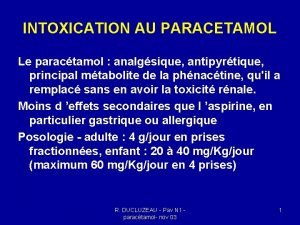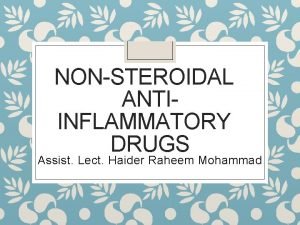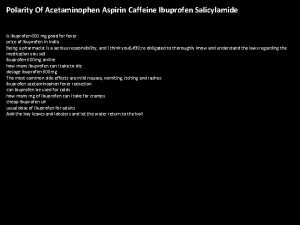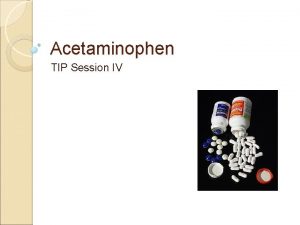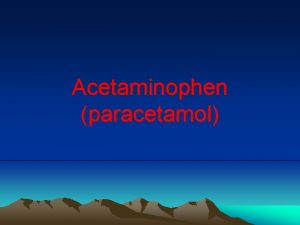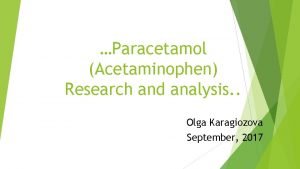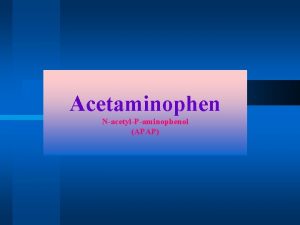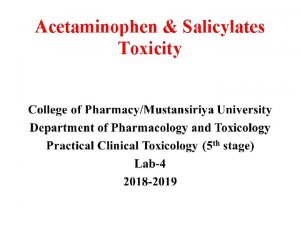Synthesis of Paracetamol n Acetaminophen Acetamidophenol M wt







- Slides: 7

Synthesis of Paracetamol

n Acetaminophen , Acetamidophenol M wt 151. 2 C 8 H 9 NO 2 Physical properties: n It is odorless, white crystal or crystalline powder with bitter taste, melting point is 167172 C. n It is slightly soluble in water (1: 70), in alcohol (1: 7), the solubility is increased in solution of alkaline like Na. OH, soluble in boiling water.

q Action and uses: 1) It is used as analgesic and antipyretic but it has less anti-inflammatory property. 2) It is found to be useful in diseases accompanied by pain, discomfort, and fever, for example, the common cold and other viral infections. 3) It is effective in a wide spectrum of arthritic and rheumatic conditions involving musculoskeletal pain as well as the pain caused due to headache, dysmenorrhea. 4) Unlike aspirin, paracetamol does not antagonize the effects of uricosuric agents.

Preparation: 1) Reduction of p-nitrophenol. The acetylation reaction is moderate, safe and not expensive. 2) P-hydroxyacetophenone (hydrazone).

Procedure: 1) Weigh 6 g of p-aminophenol and transfer to a 100 ml thoroughly cleaned and dried conical flask. 2) Add to the flask 6. 5 ml of acetic anhydride and 3 -4 drops of concentrated H 2 SO 4 cautiously. 3) Warm the mixture on a water bath maintained at 60 C for about 20 -25 min. with constant stirring.

4) Allow the contents of the flask to attain room temperature, and pour it directly into a beaker having 100 ml of cold water (with a few chips of crushed ice) and stir it vigorously. 5) Then filtered onto a Buchner funnel using suction, wash it with plenty of cold water, drain well and dry the product in an electric oven maintained at 100 C. The yield of crude paracetamol (169 -170. 5 C) is approximately 6. 8 g. Recrystallization: Dissolve the product in 70 % (w/v) ethanol and warm it to 60 C, add 2 g of powdered animal charcoal. Filter and concentrate the filtrate over a water-bath. Allow it to cool and large crystals will separate out. The yield of the pure paracetamol is approximately 6. 5 g.

Thank you

